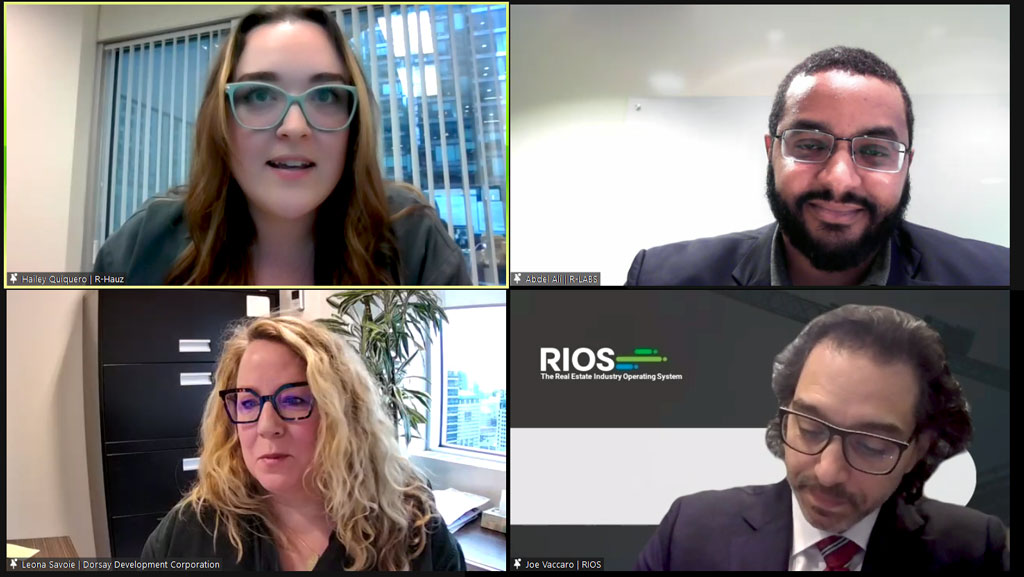Terms like incubators, accelerators and seed capital are generally linked to the tech startup world but there’s a passionate faction of GTA real estate consultants who believe it’s time the development industry started adopting that sector’s business model to break out of its stagnation.
The Toronto chapter of the Urban Land Institute recently invited four innovators in the CRE sector to discuss what it’s going to take to solve today’s intractable city-building problems.
The event, presented virtually Jan. 24, was billed as Industry Game Changers: New Business Models for Real Estate and Development Venture Companies.
The event featured two speakers from R-LABS, a venture building consultancy that is aiming to nurture a development innovation cluster in Toronto; veteran development executive Leona Savoie, formerly with Tridel, Daniels and Hullmark and now senior vice-president residential with Dorsay; and Joe Vaccaro, long-time CEO of the Ontario Home Builders’ Association who has co-founded RIOS, a development data and processes firm.
“In a venture building environment, if you can bring in some creative people, and you can bring in investors who are patient, you can build some really great businesses that can solve some really big problems,” said Vaccaro. “I think that’s really the key in venture building.”
The development sector’s aversion to change is well documented, R-LABS founder and CEO George Carras remarked. The pharma industry spends 15 per cent of its revenues on R&D and the computer software sector spends 11 per cent. Construction? It spends 0.5 per cent of its revenues on R&D.
It’s been speculated that $1.6 trillion of additional value could be created through higher productivity in the sector, meeting half the world’s infrastructure needs, he said.
“What we need here is to focus on the problems that are present with us in real estate,” said Carras. “Eight billion humans, lots of problems.
“Let’s then bring in some of the technologies and new business models that could help solve these problems.”
A new Toronto global cluster assembled last November is identifying a new innovation agenda, Carras explained.
“What if that agenda put in place a set of behaviours that can unlock the potential of this diverse region…that could lead to the renaissance of this region?
“What if this region stopped being known for being one of the most unaffordable housing markets in the world and started being known as the place where real innovation begins?”
The progression that tech startups have followed for years is now part of the development world, Carras said.
“There are incubators, they help the entrepreneur make it up, to make it real. There are accelerators, once you have it real, you can make it grow. There’s money, seed capital, growth capital and if you really hit it, private equity.
“A venture builder and venture studio is not any one of those things but it is in fact all of those things.”
A common thread of the panel discussion was the need for progressive, passionate people to come together.
“There are companies out there, they’re turning out widgets,” said Savoie. “And then there are others that are pushing the agenda and there’s consultants and support from those experts to support them all day long, and you’re just surrounding yourself with great people and great ideas, to strive for better.”
Vaccaro said he spent 15-plus years in the association world with a lot of the time spent lobbying governments to solve problems. The only tool he had was calling someone else to fix the problem.
Finally, he decided, it was better to say, “How do we solve our own problems?”
Vaccaro and his partners with RIOS believe one solution to unlocking innovation is mining the thousands of streams of data that comes out of the development process.
“You end up with is all this incredible data that should help service the industry in terms of making better decisions, being more efficient, running in different places,” he said.
There is a growing “can do” attitude, Savoie said, that is reminiscent of the collaborative efforts that paved the way for development of a timber-frame commercial building in Toronto’s Liberty Village a few years back when she was with Hullmark.
There were none of today’s engineered timber solutions around then, Savoie recalled, and Liberty Village did not seem like a typical site for that kind of structure.
But passionate people made it work.
“Let’s just create something cool that everyone’s attracted to; everyone’s attracted to Liberty Village for a reason,” she said, recalling the spirit. “Here we are in a space, trailblazing with a new type of structure, a new approach.”
Follow the author on Twitter @DonWall_DCN










Recent Comments
comments for this post are closed